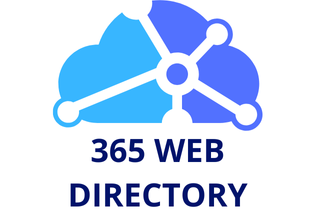In today’s rapidly evolving digital landscape, a secure remote work environment is no longer a luxury but a necessity for businesses aiming to maintain productivity and protect sensitive information. Utilizing the Ubiquiti UniFi Dream Machine (UDM), you can create a robust and secure network tailored to your unique requirements. This article will walk you through the critical steps required to set up such an environment, ensuring your remote workforce operates smoothly without compromising on security.
Unboxing and Basic Setup of Your UniFi Dream Machine
Before diving into the more intricate configurations, it’s essential to properly unbox and set up your UniFi Dream Machine. The UDM combines several powerful features, including a high-performance router, integrated security, and advanced network management capabilities, making it an all-in-one solution for small to medium-sized businesses.
Additional reading : Step-by-Step Guide to Setting Up a Safe Guest Wi-Fi Network with Google Nest Wifi
Once unboxed, place the UDM in a central location within your workspace to ensure optimal wireless coverage. Connect the device to your internet source using an Ethernet cable, then power it on. Download the UniFi Network app on your mobile device to begin the setup process. Follow the on-screen instructions to connect the UDM to your network. Ensure that you create a strong admin password and enable two-factor authentication for added security.
The initial setup will get your UDM up and running, but there are numerous configurations to tailor the network to your specific needs. This base will serve as the foundation for a secure remote work environment.
Additional reading : Mastering Mesh Networks: Optimize Your ASUS ZenWiFi AX for Ultimate Coverage in a Three-Story Home
Configuring Network Security Features
With your UDM operational, the next step is configuring the network security features to safeguard your data. The UDM comes equipped with a variety of tools designed to protect your network from internal and external threats.
Threat Management
Activate the Threat Management feature within the UniFi Controller software. This tool utilizes Deep Packet Inspection (DPI) to monitor and block malicious traffic. You can set it to different levels of sensitivity depending on your requirements. Always start by enabling a moderate level of threat sensitivity and adjust based on your network’s behavior.
Firewall and Port Settings
Configuring your firewall and port settings is crucial. Ensure that only necessary ports are open by default and that you customize the firewall rules to restrict access. This minimizes the potential entry points for cyber threats. Use the UniFi Controller software to establish these settings under the Security Gateway section.
VPN Setup
For remote workers, setting up a Virtual Private Network (VPN) is essential. The UDM allows you to configure a secure VPN to ensure that your remote employees can access the network safely. Navigate to the VPN settings in the UniFi Controller and follow the steps to create a secure and encrypted connection. Distribute the VPN credentials to your remote workers, ensuring they use it to access company resources.
Managing UniFi Devices and Access Points
The UDM’s ability to integrate seamlessly with other UniFi devices like access points and security gateways is one of its standout features. Expanding and managing these devices can significantly enhance your remote work environment.
Adding and Managing Access Points
To expand your network coverage, consider adding UniFi Access Points. These devices extend your wireless reach and ensure consistent connectivity across larger areas. Use the UniFi Network app or Controller software to add new access points and configure their settings. Pay attention to their placement to avoid dead zones and interference.
Device Management
Utilize the UniFi Controller’s device management features to monitor and manage all connected devices. This includes checking device health, updating firmware, and managing user access. Effective device management ensures that your network operates smoothly and securely. Regularly check for firmware updates, as these often include important security patches.
Guest Network Setup
Setting up a guest network can be beneficial, especially if you have visitors or temporary users needing internet access. Create a separate network for guests with limited access to your primary resources. This can be done easily within the UniFi Controller under the Wireless Networks section. Ensure that the guest network has a distinct SSID and enable any necessary security protocols.
Utilizing the Cloud Key and UniFi Protect
For enhanced network management and security, the Cloud Key and UniFi Protect offer additional tools that can bolster your remote work environment.
Cloud Key Integration
The Cloud Key acts as a centralized management solution, allowing you to control your UniFi network remotely. This can be particularly beneficial for managing multiple locations or large setups. The Cloud Key integrates seamlessly with the UniFi Controller software, providing real-time updates and access to your network settings from anywhere.
Implementing UniFi Protect
UniFi Protect is a surveillance solution that integrates with your UniFi network, providing an added layer of security. Installing cameras around your workspace and integrating them with UniFi Protect allows you to monitor physical security and access to your network. You can set up alerts for suspicious activities and access recorded footage through the UniFi Protect app.
Both the Cloud Key and UniFi Protect enhance your ability to maintain a secure and well-managed network, ensuring that both digital and physical aspects of your remote work environment are covered.
Advanced Configurations for Optimal Performance
Once the basic and security configurations are in place, diving into advanced settings can optimize your network’s performance and further secure the remote work environment.
DNS and RADIUS Server Configuration
Configuring a DNS server can improve network efficiency and resolve domain names quicker. You can set up a custom DNS server within the UniFi Controller under the Network settings. Additionally, setting up a RADIUS server enhances authentication processes across the network, ensuring that only authorized users gain access.
Quality of Service (QoS) Settings
Implementing Quality of Service (QoS) settings helps prioritize critical business applications over less important traffic. This is particularly useful for remote work environments where video conferencing and real-time collaboration tools are in use. Configure QoS settings within the UniFi Controller to ensure optimal bandwidth allocation.
User and Device Access Control
Managing user access is vital for network security. Use the UniFi Controller to set up different user roles and permissions. Ensure that remote employees have access only to the resources they need. Regularly audit user access and update permissions as roles change within the organization.
Backup and Disaster Recovery
Regular backups of your network settings and configurations are essential. The UniFi Controller allows you to schedule automatic backups, ensuring that you can quickly restore your network in case of a failure. Implementing a disaster recovery plan ensures business continuity even in the face of unforeseen events.
Setting up a secure remote work environment using the Ubiquiti UniFi Dream Machine involves several critical steps, from initial setup to advanced configurations. By thoroughly following these steps, you ensure a robust, secure, and efficient network that supports your remote workforce.
Start with a solid foundation by correctly unboxing and setting up the UDM. Configure essential network security features like threat management and VPN. Expand and manage your network using additional UniFi devices and access points. Utilize the Cloud Key and UniFi Protect for enhanced management and security. Finally, delve into advanced configurations to optimize performance and access control.
By following these comprehensive steps, your organization will be well-equipped to handle the demands of remote work, ensuring productivity and security in equal measure. The Ubiquiti UniFi Dream Machine proves to be an invaluable asset in creating a secure, manageable, and efficient remote work environment.











